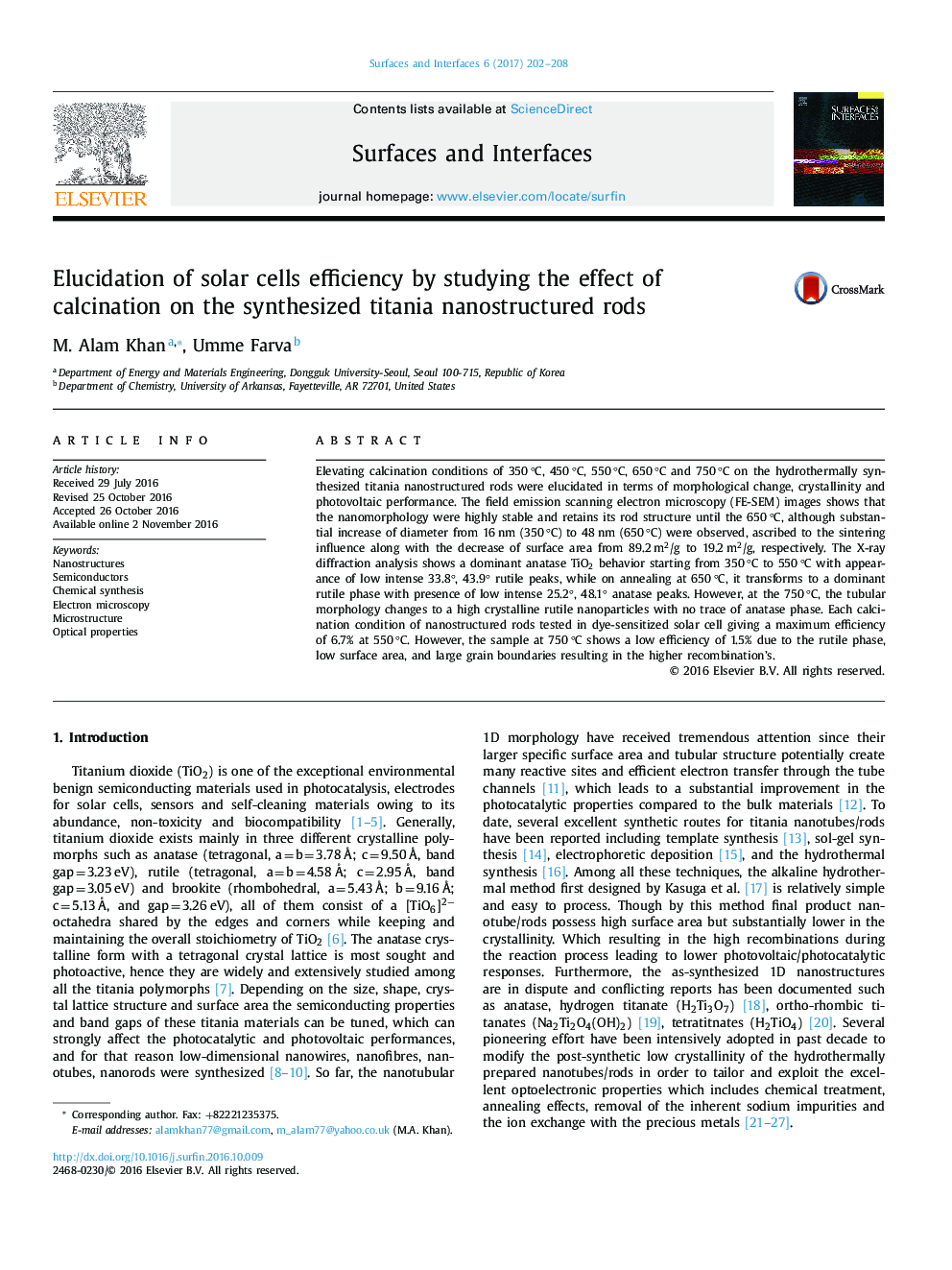| Article ID | Journal | Published Year | Pages | File Type |
|---|---|---|---|---|
| 4985605 | Surfaces and Interfaces | 2017 | 7 Pages |
Elevating calcination conditions of 350 °C, 450 °C, 550 °C, 650 °C and 750 °C on the hydrothermally synthesized titania nanostructured rods were elucidated in terms of morphological change, crystallinity and photovoltaic performance. The field emission scanning electron microscopy (FE-SEM) images shows that the nanomorphology were highly stable and retains its rod structure until the 650 °C, although substantial increase of diameter from 16 nm (350 °C) to 48 nm (650 °C) were observed, ascribed to the sintering influence along with the decrease of surface area from 89.2 m2/g to 19.2 m2/g, respectively. The X-ray diffraction analysis shows a dominant anatase TiO2 behavior starting from 350 °C to 550 °C with appearance of low intense 33.8°, 43.9° rutile peaks, while on annealing at 650 °C, it transforms to a dominant rutile phase with presence of low intense 25.2°, 48.1° anatase peaks. However, at the 750 °C, the tubular morphology changes to a high crystalline rutile nanoparticles with no trace of anatase phase. Each calcination condition of nanostructured rods tested in dye-sensitized solar cell giving a maximum efficiency of 6.7% at 550 °C. However, the sample at 750 °C shows a low efficiency of 1.5% due to the rutile phase, low surface area, and large grain boundaries resulting in the higher recombination's.
